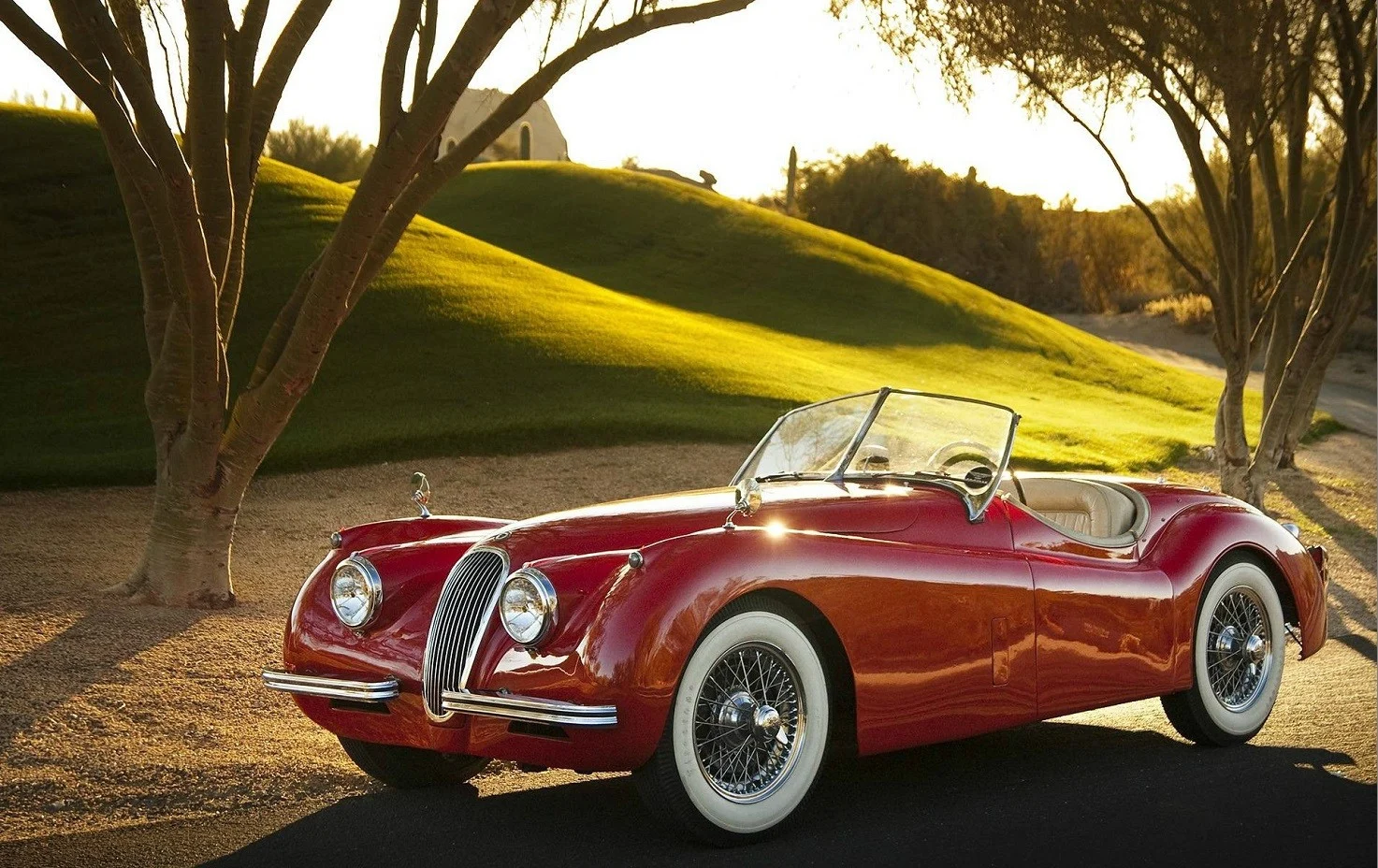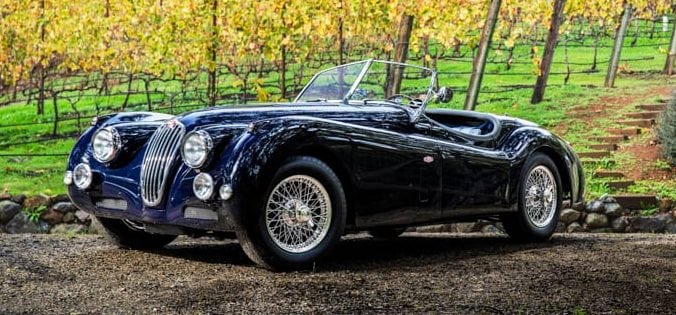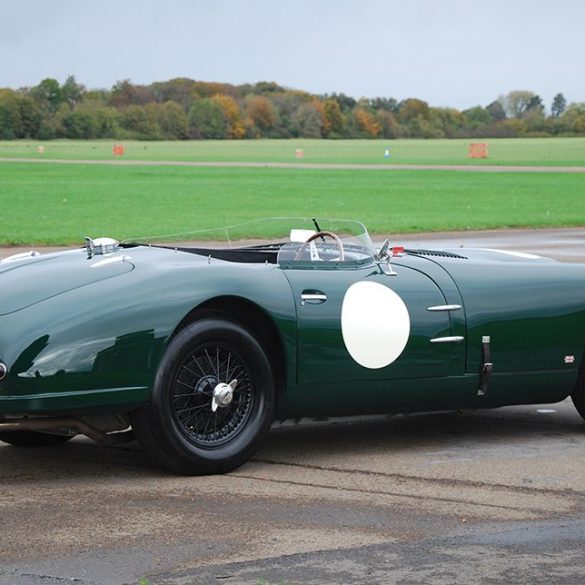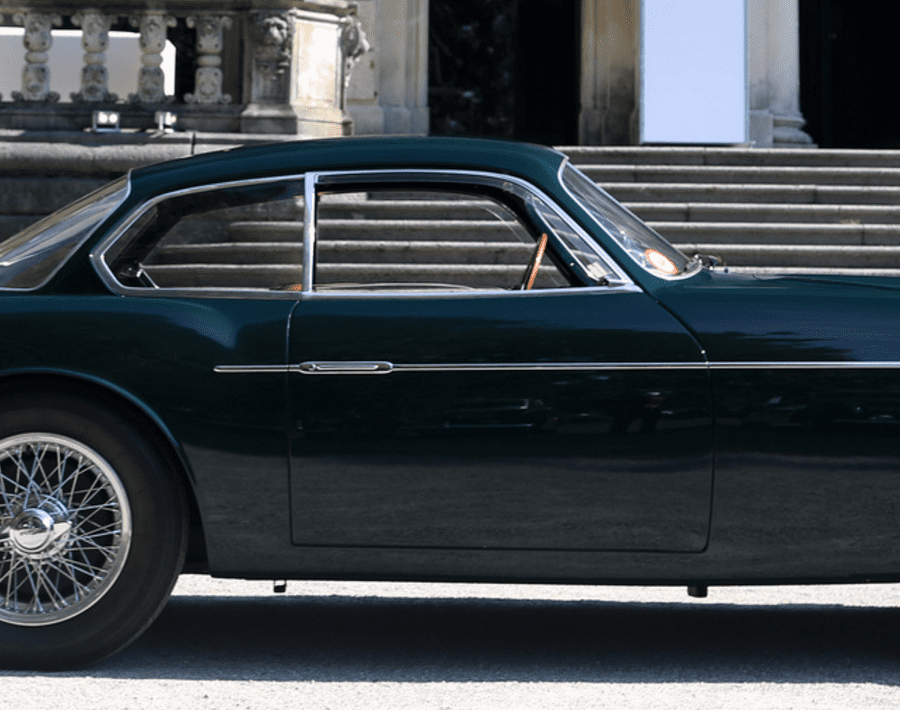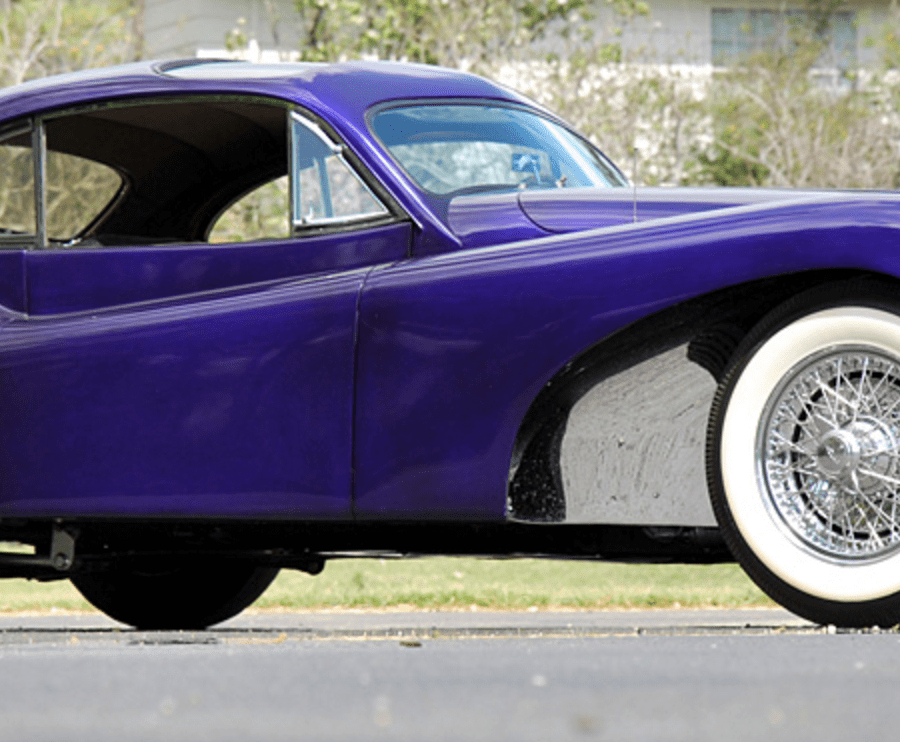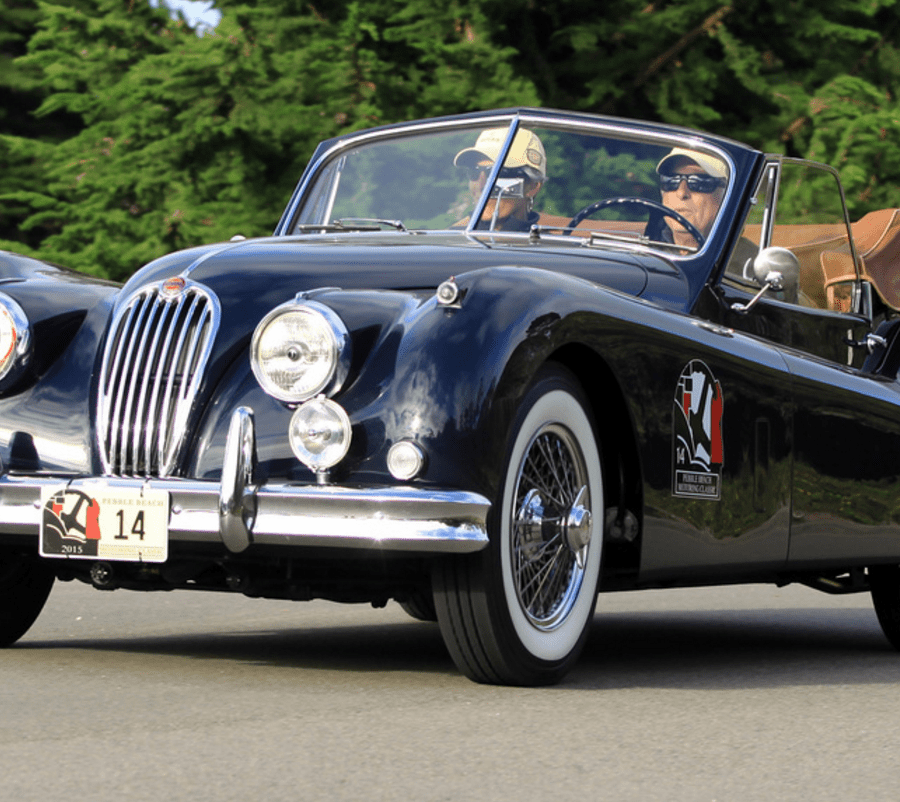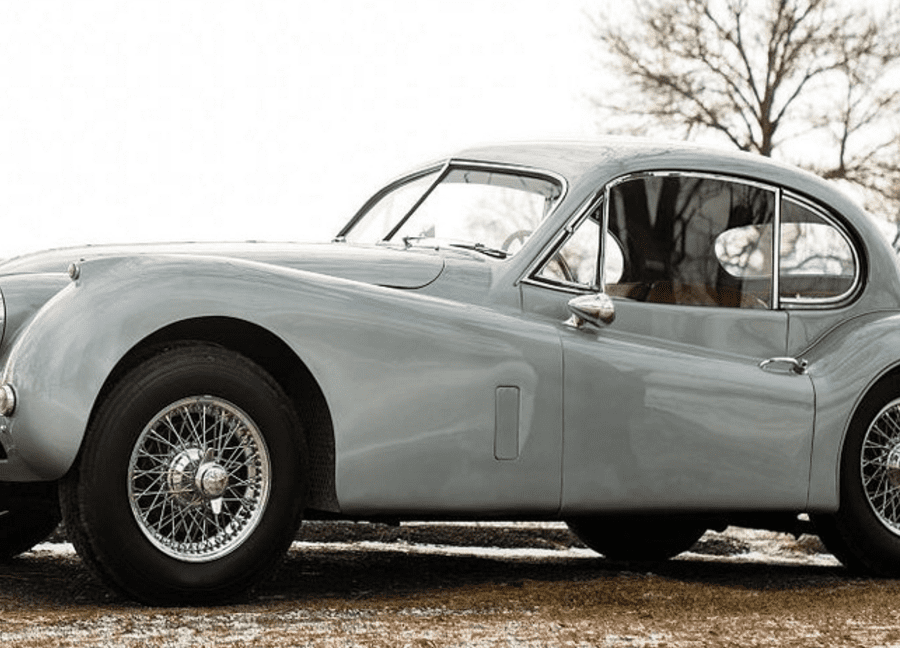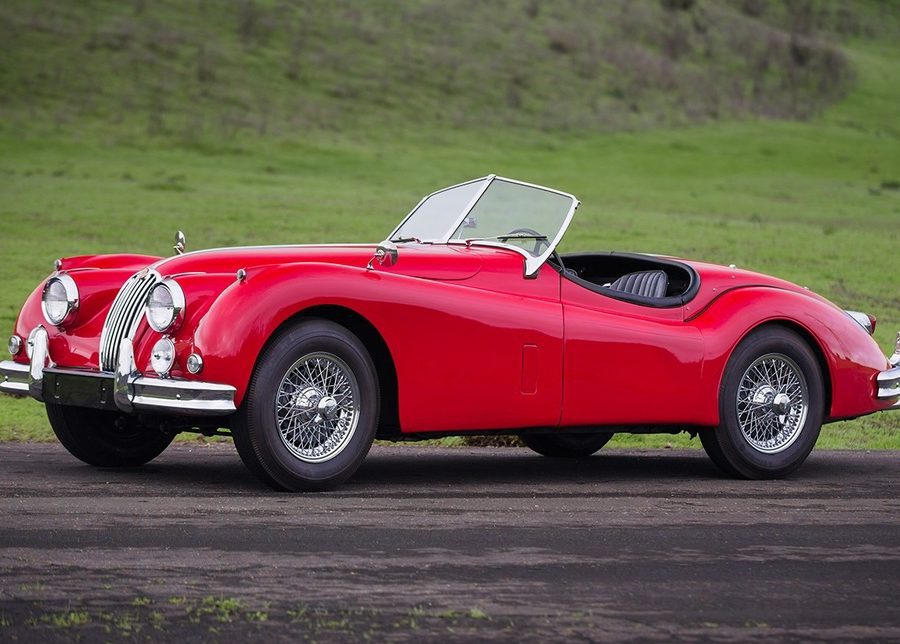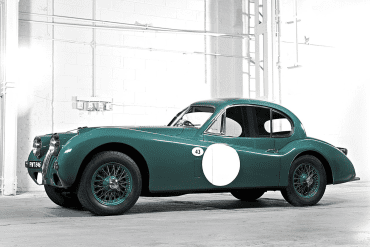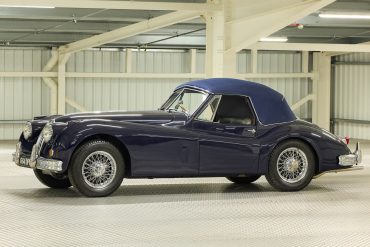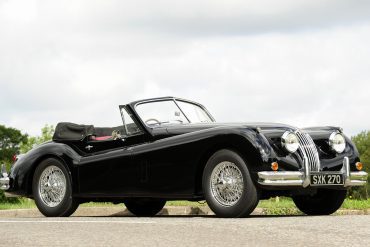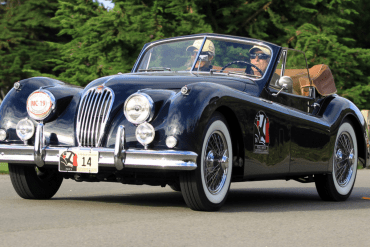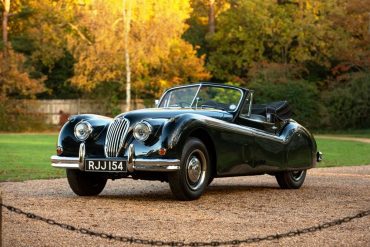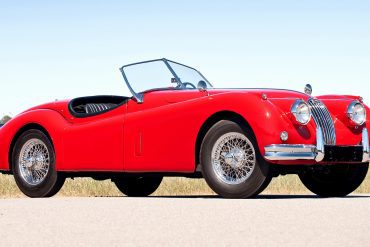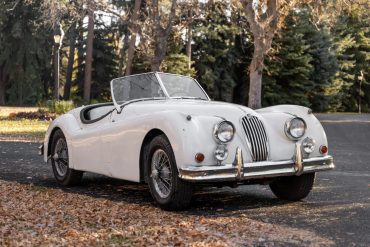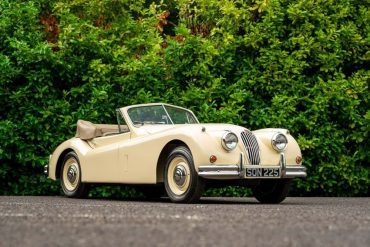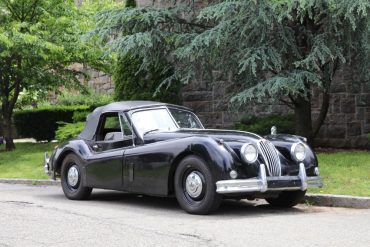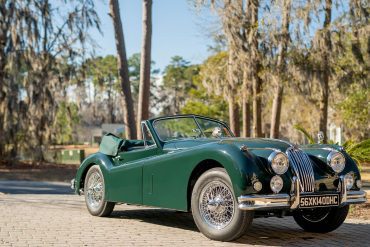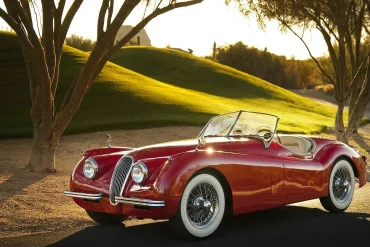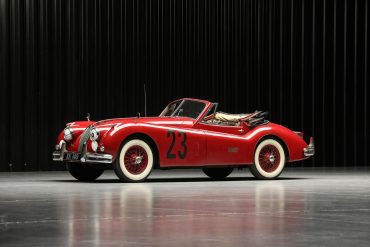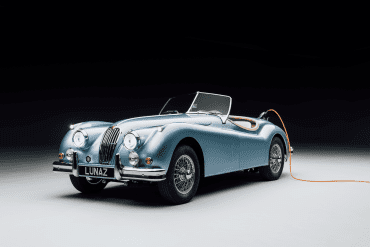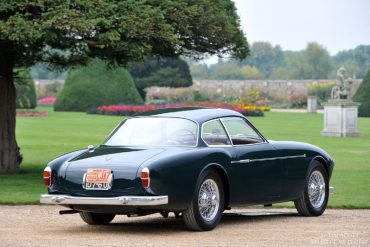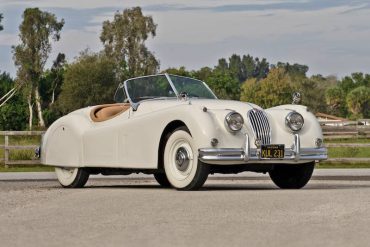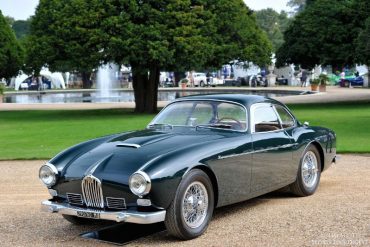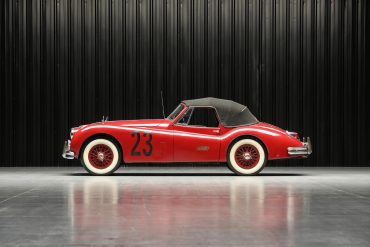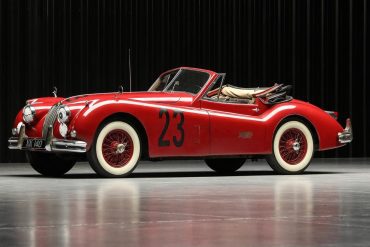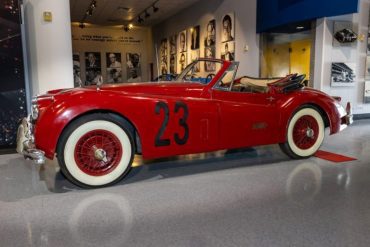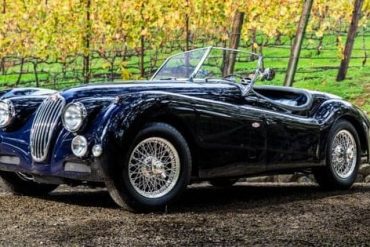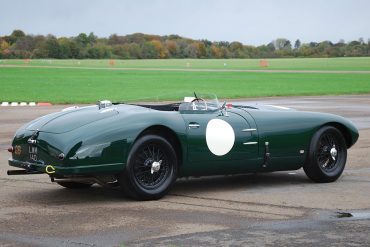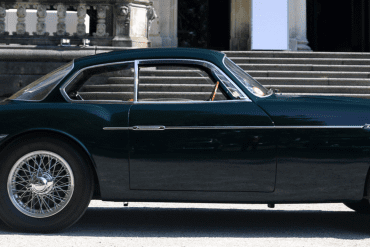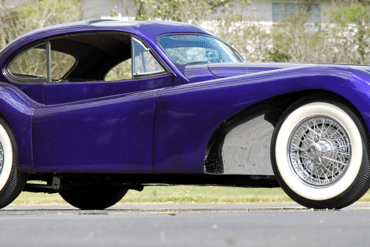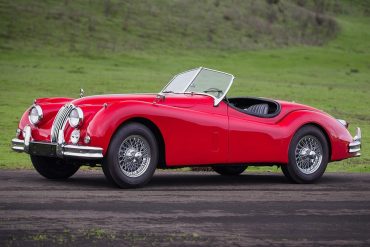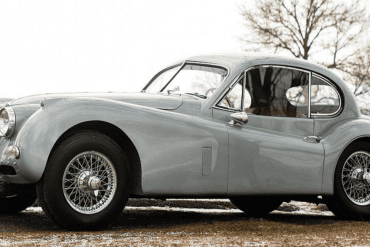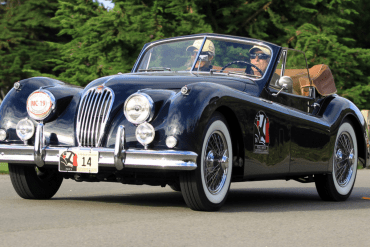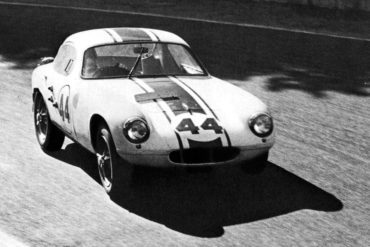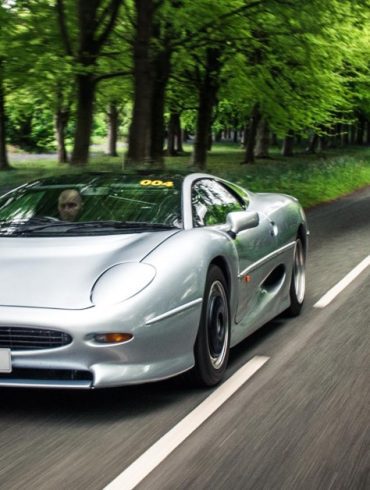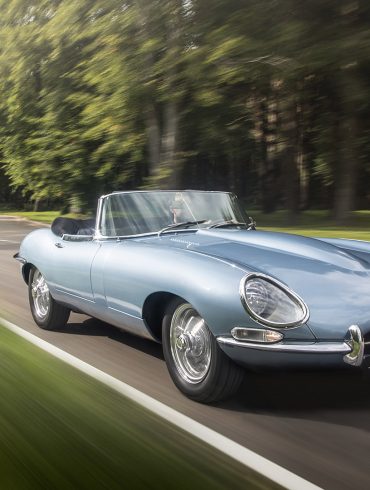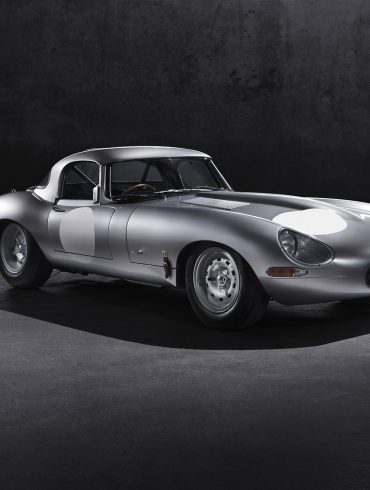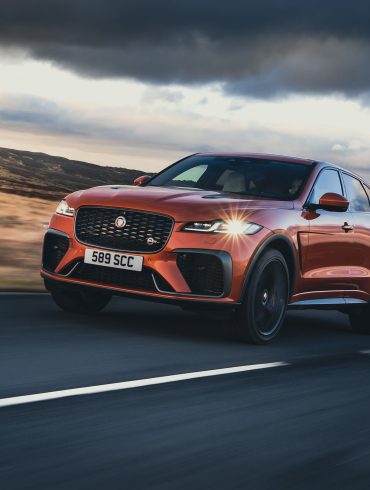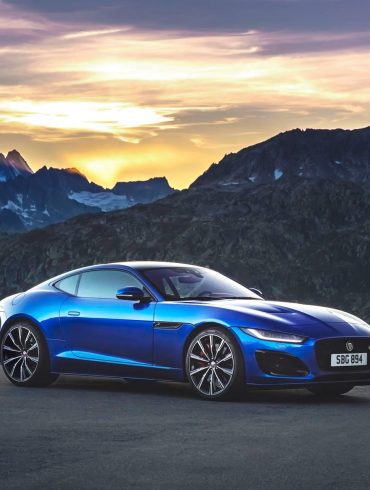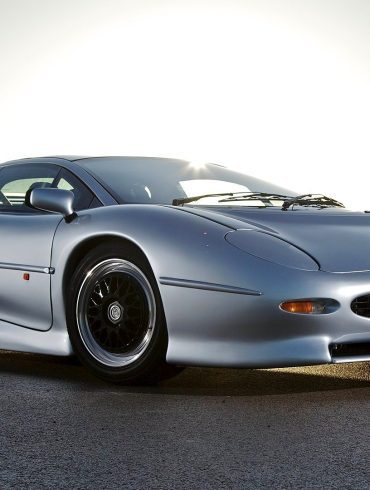Jaguar XK140
1954 - 1957
The Jaguar XK140 was produced between 1955 and 1957 as the successor to the XK120. Upgrades included more interior space, improved brakes, rack and pinion steering, increased suspension travel, and telescopic shock absorbers instead of the older lever arm design. The XK140 was powered by the 3.4 litre Jaguar XK double overhead camshaft inline-6 engine. It was available as a Roadster, Drophead Coupé and Fixed Head Coupé. It was replaced by the Jaguar XK150 in 1957.
Overview / The Legend / Model Guides / Image Gallery / More Updates
Overview
The XK140 stayed fairly true to the iconic lines of the 120 but there were some key advancements. The engine, for example, had a little more power and it was moved further forward to create more space in the cabin. The steering was updated to a rack and pinion set-up for extra precision and ease-of-use and for the first time overdrive was offered as an option, as was an automatic transmission.
Undeniably still a beautiful car, there are some that say the 140’s heavier bumpers and less refined cast grille detract from the absolute purity of the XK120.
The Roadster variant is very popular, and the right-hand-drive versions are extremely rare – only 74 were built. What’s more, if you can find one that was raced in period then that’s very special indeed.
The XK140 DHC is arguably the finest all-rounder in the XK range. You retain the curvaceous wing lines of the 120, can enjoy open-top motoring, have wind-up windows, a proper hood, rack-and-pinion steering and a little more space in the cabin compared to the XK120 DHC.
The XK140 Fixed Head Coupé is an often-overlooked member of the XK family. With an extended roofline over the XK120 FHC you get more space in the cockpit, and all the mechanical benefits of the XK140.
The Story
Fresh from their victories at the 24 Hours of Le Mans, Jaguar used their competition pedigree to sell the XK140. The principle brochure said “All the accumulated wealth of knowledge and experience gained in the hard school of racing have been built into the new XK140 models which are powered by the famous 3½ litre twin overhead camshaft XK engine.”
Launched in late 1954 as the 1955 model, the XK140 presented several key updates over its predecessor. Notably, it featured heftier front and rear bumpers equipped with prominent overriders. It also introduced contemporary flashing turn signals, controlled by a dedicated switch on the dashboard, with distinctive twin amber lights above the front bumper, a feature that soon found its way onto XK120 models as a retrofit.
The grille retained its original dimensions but was redesigned as a single-piece casting with fewer, but thicker, vertical bars. The Jaguar emblem was now attached directly to the grille, unlike the XK120 where it was positioned between the grille and the hood. A chrome strip extended from the front, over the hood, and along the back of the trunk lid, which showcased a red shield inscribed with "Winner Le Mans 1951-3" in gold.
Interior space was enhanced with an additional three inches of legroom, achieved by shifting the engine, firewall, and dashboard forward. This redesign necessitated relocating the battery to a challenging spot inside the wing on the inlet side.
The XK140 maintained the revered XK engine, now standard with the Special Equipment modifications previously optional on the XK120, thus boosting power output to 190 bhp at 5500 rpm. The optional C-Type cylinder head from the XK120 remained available, offering 210 bhp at 5750 rpm. Equipped with this head, 2-inch sandcast H8 carburetors, stiffer front torsion bars, and dual exhausts, the model was branded as the XK-140 SE in the UK and the XK-140 MC in North America.
1956 saw the XK140 become the first Jaguar sports car available with an automatic transmission. While wire wheels and dual exhausts were optional, most US imports featured the former. Models with disc wheels were still available with rear wheel spats.
The XK140 was offered in three body variants. The OTS (Open Two-Seater) roadster sported a collapsible canvas top that tucked away entirely, leaving a clean rear profile. The interior boasted leather and leatherette, including on the dashboard, and featured detachable side curtains and a tonneau cover.
The DHC (Drop Head Coupe) came with a fixed soft top that rested externally when folded down and included roll-up windows and a luxuriously walnut-veneered dashboard and door cappings, a feature shared with the FHC (Fixed Head Coupe). Both coupes included a practical jump seat, with the FHC offering more interior space due to its more forward-set windscreen.
Jaguar XK140 Basics
Manufacturer: Jaguar Cars
Production: 1954–1957
Body style: 2-seat roadster, 2-seat convertible, 2-seat coupé
Layout: Front Engined, RWD
Engine: XK 140 3.4 L Inline 6 (1954-1957)
Engine: XK 140 3.4 SE (C-Type Head)(""MC"" in USA) (1954-1957)
Length: 176 in (4,470 mm)
Width: 64.5 in (1,638 mm)
Kerb weight: 3,136–3,248 lb (1,422–1,473 kg)
Predecessor: Jaguar XK120
Successor: Jaguar XK150
Did You Know?
The XK140's more substantial bumpers were a response to both styling trends and emerging safety regulations, making it visually distinct from the XK120.
It was available in three body styles: the classic Roadster (OTS), a stylish Fixed Head Coupe (FHC), and a Drophead Coupe (DHC) with full convertible top.
The "Special Equipment" (SE) package offered a higher-performance version with an upgraded C-type cylinder head and other tweaks for the sportier drivers.
“All the accumulated wealth of knowledge and experience gained in the hard school of racing have been built into the new XK140 models which are powered by the famous 3½ litre twin overhead camshaft XK engine.”
XK140 Sales Brochure
The XK140 is a refined and well-mannered sports car that can readily and pleasurably be used for daily transportation... and provides exhilarating performance as well."
Road & Track (1955)


